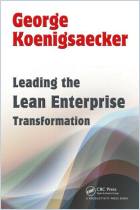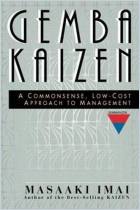Efforts to adopt Lean principles often fall short because managers focus too much on choosing a strategy and not enough on executing it. Pascal Dennis offers a program for strategy deployment, drawn from Toyota’s hoshin kanri system, that outlines the steps for designing, implementing, monitoring and adjusting a strategy. The plan is straightforward, although the reader must navigate a thicket of four-part, six-step and seven-stage tools and absorb such concepts as the action tree, the A3 storyboard and the ladder of abstraction. Fortunately, Dennis presents all this through the easy-to-follow story of a successful strategy deployment at the fictitious Atlas Industries.
A strategy-deployment plan helps a business establish Lean management principles and sustain them over the long term.
Lean practices produce greater efficiencies and enhance the value you create for customers. Businesses can find it difficult to sustain these practices and preserve their benefits. An enterprise needs a strategy for deploying Lean practices that aligns all the organization’s processes toward a clearly defined goal.
Toyota uses a system called “strategy deployment” – hoshin kanri – to integrate Lean concepts into the core of its operations and become a production powerhouse.
Traditional systems focus on finding a strategy that aligns with a firm’s goals and abilities. Strategy deployment does too, but it helps craft the necessary steps for executing the strategy. As with conventional planning systems, strategy deployment begins with asking: What are your corporate values? Your strengths? Your weaknesses? What hazards are you facing? What opportunities?
Before making a plan, assess the current situation.
Before you design and implement your strategic plan, you need to understand how your organization...
Faculty member of the Lean Enterprise Institute Pascal Dennis is an engineer, author, consultant and winner of the ASQ Golden Quill, a 2006 Shingo Prize and the OSH Award of Excellence.





















Comment on this summary or 开始讨论